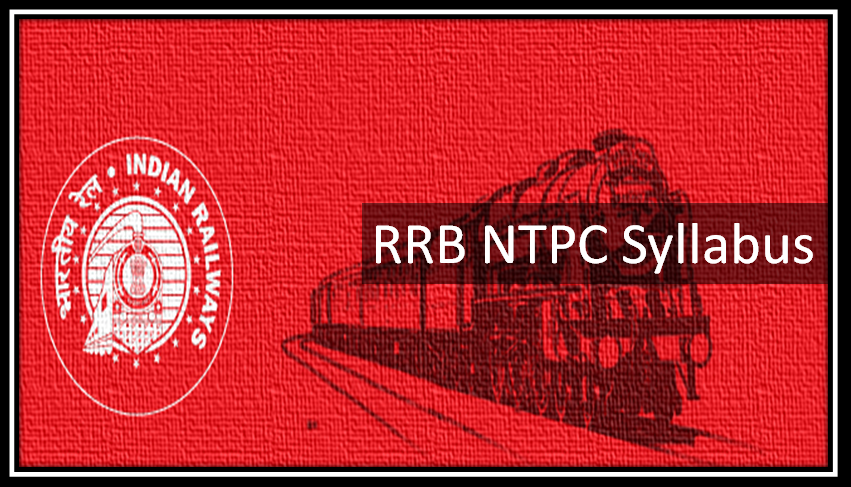Maharashtra Board HSC Chemistry Syllabus 2024-25

Maharashtra Board HSC Chemistry syllabus is here to download for the academic session 2024-25. You may also download the syllabus pdf for Chemistry theory and practical.
The chemistry syllabus comprises of areas such as like physical, organic, inorganic, industrial, analytical and polymer chemistry. If you have specific concern (s) related to Maharashtra Board class 11 & 12 Chemistry Syllabus then let us know through the comment box below.
Maharashtra Board HSC Chemistry Syllabus 2024-25
Here you can view and download Maharashtra Board class 11 and 12 Theory & Practical syllabus for Chemistry:
Class 11 Theory Syllabus
Unit 1: Some Basic Concepts of Chemistry General Introduction: Importance and scope of chemistry. Historical approach to particulate nature of matter, laws of chemical combination, Dalton’s atomic theory : concept of elements, atoms and molecules. Atomic and molecular masses mole concept and molar mass : Avogadro’s law and Avogadro number, percentage composition, empirical and molecular formula, chemical reactions, stoichiometry and calculations based on stoichimetry.
Unit 2 :States of matter : Gases and liquids
Three states of matter. Intermolecular interactions, type of bonding. Role of gas laws in elucidating the concept of the molecule, Boyle’s law, Charles law, Gay Lussac’s law. Ideal behaviour, empirical derivation of gas equation. Ideal gas equation. Deviation from ideal behaviour, liquefaction of gases. Critical temperature. Kinetic energy and molecular speeds (elementary idea) Liquid State – Vapour pressure, viscosity and surface tension (qualitative idea only, no mathematical derivations).
Unit 3 : Structure of atom
Discovery of electron, proton and neutron; atomic number, isotopes and isobars. Rutherford’s model and its limitations, Bohr’s model and its limitations, concept of shells and subshells, dual nature of matter and light, de Broglie’s relationship, Heisenberg’s uncertainty principle, concept of orbitals, quantum numbers, shapes of s, p and d orbitals, rules for filling electrons in orbitals – Aufbau principle, Pauli’s exclusion principle and Hund’s rule, electronic configuration of atoms, stability of half filled and completely filled orbitals.
Unit 4 : Periodic table
Significance of classification, brief history of the development of periodic table, modern periodic law and present form of periodic table, periodic trends in properties of elements atomic radii, ionic radii. Inert gas radii nomenclature of elements with atomic number greater than 100.Enthalpy: Explanation and definition of term. Ionization enthalpy, electron gain enthalpy, electronegativity, valence.
Unit 5: Redox reactions
Concept of oxidation and reduction, redox reactions, oxidation number, Balancing redox reactions, in terms of loss and gain of electrons and change in oxidation number.
Unit 6: Chemical equilibrium
Equilibrium in physical and chemical processes, dynamic nature of equilibrium, law of mass action, equilibrium constant, factors affecting equilibrium, Le Chatelier’s principle.
Ionic equilibrium: Ionization of acids and bases, strong and weak electrolytes, degree of ionization, ionization of polybasic acids, acid strength, concept of pH. Hydrolysis of salts (elementary idea). Buffer solutions, solubility product, common ion effect (with illustrative examples.) Handerson equation.
Unit 7 : Surface chemistry
Adsorption – physisorption and chemisorption; factors affecting adsorption of gases on solids; catalysis : homogenous and heterogeneous, activity and selectivity: enzyme catalysis; colloidal state : distinction between true solutions, colloids and suspensions; Lyophilic, Lyophobic, multimolecular and macromolecular colloids; properties of colloids; Tyndall effect, Brownian movement, electrophoresis, coagulation; emulsion – types of emulsions. Elementary idea of nanomaterials.
Unit 8 : Nature of chemical bond Valence electrons, ionic bond, Born Haber cycle : covalent bond parameters. Lewis structure, polar character of covalent bond, covalent character of ionic bond, valence
bond theory, resonance, geometry of covalent molecules, VSEPR theory, concept of hybridization involving s, p and d orbitals and shapes of some simple molecules, molecular orbital theory of homonuclear diatomic molecules (qualitative idea only), hydrogen bond.
Unit 9 : Hydrogen
Position of hydrogen in periodic table, occurrence, isotopes, preparation, properties and uses of hydrogen; hydrides- ionic, covalent and interstitial; physical and chemical properties of water, heavy water. Hydrogen peroxide- preparation, properties and structure; hydrogen as a fuel. Uses of hydrogen peroxide.
Unit 10: s-Block elements (Alkali and alkaline earth metals)
Group 1 and Group 2 elements :
General introduction, electronic configuration, occurrence, anomalous properties of the first element of each group, diagonal relationship, trends in the variation of properties (such as ionization enthalpy, atomic and ionic radii), trends in chemical reactivity with oxygen, water, hydrogen and halogens; uses. Preparation and properties of some important compounds: Sodium carbonate, sodium hydroxide and sodium hydrogen carbonate, biological importance of sodium and potassium. Calcium oxide and calcium carbonate and industrial uses of lime and limestone, biological importance of Magnesium and Calcium.
Unit 11 : p-Block elements
Group Introduction to p-Block elements Group 13 elements :
General introduction, electronic configuration, occurrence. Variation of properties, oxidation states, trends in chemical reactivity, anomalous properties of first element of the group. Boron- physical and chemical properties, some important compounds: borax, boric acids, boron hydrides. Aluminium; uses, reactions with acids and alkalies.
Group 14 elements :
General introduction, electronic configuration, occurrence, variation of properties, oxidation states, trends in chemical reactivity, anomalous behavior of first element. Carbon – catenation, allotropic forms, physical and chemical properties; uses of some important compounds; oxides. Important compounds of silicon and their uses: silicon tetrachloride, silicones, silicates and zeolites and structure of silicates.
Unit 12: Basic principles and techniques in organic chemistry
General introduction, methods of qualitative and quantitative analysis, Classification and IUPAC nomenclature of organic compounds. Melting point and boiling point. Electronic displacements in a covalent bond; inductive effect, electromeric effect, resonance and hyper conjugation.Homolytic and heterolytic fission of a covalent bond; free radicals,carbocations, carbanions; electrophiles and nucleophiles, types of organic reactions.
Unit 13 : Alkanes
Classification of hydrocarbons – Nomenclature, isomerism, conformations (ethane only), physical properties, chemical reactions including free radical mechanism
of halogenation, combustion and pyrolysis.
Unit 14 : Alkenes
Nomenclature, structure of double bond (ethane), geometrical isomerism, physical properties, methods of preparation. Chemical reactions; addition of hydrogen, halogen, water, hydrogen halides (Markovnikoff’s addition and peroxide effect) ozonolysis, oxidation, mechanism of electrophilic addition.
Unit 15: Alkynes
Nomenclature, structure of triple bond (ethylene), physical properties. Methods of preparation, chemical reactions: acidic character of alkynes, addition reaction of
– hydrogen, halogens, hydrogen halides, water.
Unit 16 : Aromatic compounds
Introduction, IUPAC nomenclature; benzene; resonance aromaticity; chemical properties; mechanism of electrophilic substitution. – nitration, sulphonaiton, halogenation, Friedel Craft alkylation and acylation; Carcinogenicity and toxicity.
UNIT-17: Environmental chemistry Environmental pollution- air, water and soil pollution, chemical reactions in atmosphere, smog, major atmospheric pollutants, acid rain, ozone and its reactions, effects of depletion of ozone layer, green house effect and global warming. Pollution due to industrial wastes, green chemistry as an alternative tool for reducing pollution, strategy for control of environmental pollution.
Class 12 Theory Syllabus
Unit 1: Solid State
Classification of solids based on different forces; molecular, ionic, covalent and metallic solids, amorphous and crystalline solids (elementary idea), unit cell in two dimensional and three dimensional lattices, calculation of density of unit cell, packing in solids, voids, number of atoms per unit cell in a cubic unit cell, point defects, electrical and magnetic properties, Band theory of metals, conductors and semiconductors and insulators and n and p type semiconductors.
Unit 2 : Solutions and colligative properties
Types of solutions, expression of concentration of solids in liquids, solubility of gases in liquids, solid solutions, colligative properties –relative loweringof vapor pressure,Raoult’s law elevation of boiling point, depression of freezing point, osmotic pressure, determination of molecular masses using colligative properties, abnormal molecular mass.Van’t Hoff factor and calculations involving it.
Unit 3 :Chemical thermodynamics and
energetic
Concepts of system, types of systems, surroundings. Work, heat, energy, extensive and intensive properties, state functions. First law of thermodynamics – internal energy and enthalpy, Hess’ law of constant heat summation, enthalpy of bond dissociation, combustion, formation, atomization, sublimation. Phase transition, ionization and solution and dilution Introduction of entropy as a state function, free energy change for spontaneous and non spontaneous processes, and equilibrium constant. Second and third law of thermodynamics
Unit 4: Electrochemistry
Redox reactions, conductance in electrolytic solutions, specific and molar conductivity, variations of conductivity with concentration, Kohlrausch’s Law, electrolysis and laws of electrolysis (elementary idea), dry cell –electrolytic and galvanic cells; lead accumulator, EMF of a cell, standard electrode potential, Nernst equation and its application to chemical cells, fuel cells; corrosion. Relation between Gibb’s energy change and emf of a cell.
Unit 5: Chemical kinetics
Rate of reaction (average and instantaneous), factors affecting rate ofreaction; concentration, temperature, catalyst; order and molecularity of a reaction; rate law and specific rate constant, integrated rate equations and half life (only for zero and first order reactions); concept of collision theory (elementary idea, no mathematical treatment). Activation energy, Arrhenius equation.
Unit 6 :General principles and processes of isolation of elements
Principles and methods of extraction – concentration, oxidation, reduction electrolytic method and refining; occurrence and principle of extraction of aluminium, copper, zinc and iron
Unit 7: p-Block elements
Group 15 elements:
General introduction, electronic configuration, occurrence, oxidation states, trends in physical and chemical properties; nitrogen – preparation, properties and uses; compounds of nitrogen; preparation and properties of ammonia and nitric acid, oxides of nitrogen (structure only); Phoshorous-allotropic forms; compounds of phosphorous; preparation and properties of phosphine, halides (PCl3,PCl5) and
oxoacids (elementary idea only).
Group 16 elements:
General introduction, electronic configuration, oxidation states, occurrence, trends in physical and chemical properties; dioxygen; preparation, properties and uses; Classification of oxides, simple oxides; Ozone.
Sulphur – allotropic forms; compounds of sulphur; preparation, properties and uses of sulphur dioxide; sulphurc acid; industrial process of manufacture, properties and
uses, oxoacids of sulphur (structures only).
Group 17 elements:
General introduction, electronic configuration, oxidation states, occurrence, trends in physical and chemical properties; compounds of halogens; preparation, properties and uses of chlorine and hydrochloric acid, interhalogen compounds, oxoacids of halogens (structure only).
Group 18 elements:
General introduction, electronic configuration. Occurrence, trends in physical and chemical properties, uses.
Unit 8 : d and f Block Elements
d-Block Elements –
General introduction, electronic configuration, occurrence and characteristics of transition metals, general trends in properties of the first row transition metals – metallic character, ionization enthalpy, oxidation states, ionic radii, colour, catalytic property, magnetic properties, interstitial compounds, alloy formation preparation and properties of K2Cr2O7 and KMnO4.
f-Block elements-
Lanthanoids – Electronic configuration, oxidation states, chemical reactivity and lanthanoid contraction and its consequences. Actinoids – Electronic configuration, oxidation states. Comparison with lanthanoids.
Unit 9: Coordination compounds Coordination compounds – Introduction, ligands, coordination number, colour, magnetic properties and shapes, IUPAC nomenclature of mononuclear coordination compounds, bonding; Werner’s theory, VBT, CFT. isomerism, (structural and stereo) importance of coordination compounds (in qualitative analysis, extraction of metals and biological systems).
Unit 10 : Halogen derivatives of alkanes
(and arenes)
Haloalkanes :
Nomenclature, nature of C-X bond, physical and chemical properties, mechanism of substitution reactions. Stability of carbocations,R-S and d-l configuration
Haloarenes :
Nature of C-X bond, substitution reactions (directive influence of halogen for monosubstituted compounds only) stability of carbocations, R-S and d-l configurations. Uses and environmental effects of – dichloromethane, thrichloromethane, tetrachloromethane, iodoform, freons, DDT.
Unit 11 : Alcohols, phenols and ethers
Alcohols :
Nomenclature, methods of preparation, physical and chemical properties (of primary alcohols only); identification of primary, secondary and tertiary alcohols; mechanism of dehydration, uses of methanol and ethanol.
Phenols:
Nomenclature, methods of preparation, physical and chemical properties, acidic nature of phenol, electrophillic substitution reactions, uses of phenols.
Ethers :
Nomenclature, methods of preparation, physical and chemical properties, uses.
Unit 12 : Aldehydes, ketones and carboxylic acids
Aldehydes and ketones :
Nomenclature, nature of carbonyl group, methods of preparation. Physical and chemical properties, mechanism of nucleophilic addition, reactivity of alpha hydrogen in aldehydes; uses.
Carboxylic acids :
Nomenclature, acidic nature, methods of preparation, physical and chemical properties; uses.
Unit 13: Organic compounds
containing nitrogen
Nitro compounds-General methods of preparation and chemical reactions Amines :
Nomenclature, classification, structure, methods of preparation, physical and chemical properties, uses, identification of primary, secondary and tertiary amines. Cyanides and isocyanides:
Will be mentioned at relevant places in context.
Diazonium salts:
Preparation, chemical reactions and importance in synthetic organic chemistry.
Unit 14: Biomolecules
Carbohydrates:
Classification (aldoses and ketoses), monosaccahrides d-l configuration (glucose and fructose), oligosaccharides (sucrose, lactose, maltose), polysaccharides (starch, cellulose, glycogen), importance. Proteins:
Elementary idea of -amino acids, peptide, linkage, polypeptides, proteins; structure of amines-primary, secondary, tertiary structure and quaternary structures (qualitative idea only), denaturation of proteins; enzymes. Lipids and hormones (elementary idea) excluding structure, their classification and functions.
Vitamins: Classification and functions.
Nucleic acids: DNA and RNA
Unit 15: Polymers
Classification – natural and synthetic, methods of polymerization (addition and condensation), copolymerization. Some important polymers; natural and synthetic like polythene, nylon, polyesters, bakelite, and rubber. Biodegradable and non biodegradable polymers.
Unit 16: Chemistry in everyday life :
- Chemicals in medicines : analgesics, tranquilizers, antiseptics, disinfectants, antimicrobials, antifertility drugs, antibiotics, antacids, antihistamines elementary idea of antioxidants
- Chemicals in food : Preservatives, artificial sweetening agents.
Cleansing agents : Soaps and detergents, cleansing action.
Download- Maharashtra Board HSC Chemistry Syllabus



